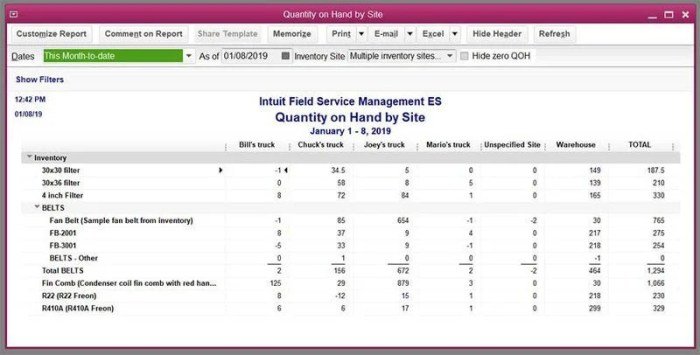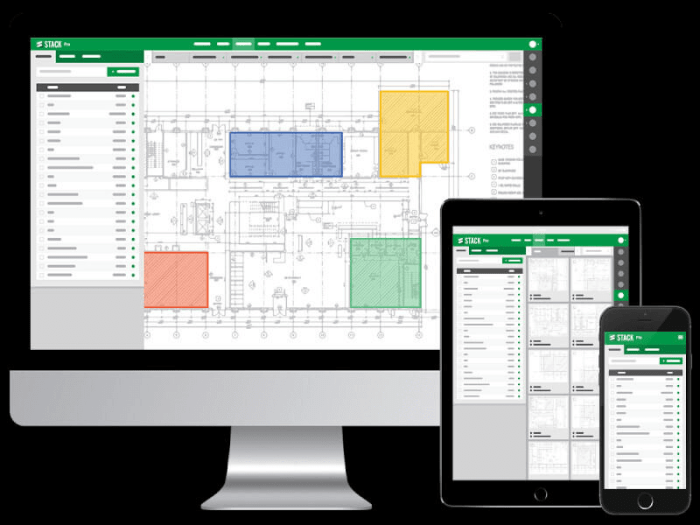Navigating the complexities of HVAC equipment selection has become more manageable than ever with the advent of specialized software. This comprehensive guide delves into the intricacies of HVAC software, empowering you to make informed decisions that optimize your HVAC system’s efficiency and performance.
From understanding the essential features and functionalities to exploring the latest trends in software development, this guide provides a thorough overview of the role HVAC software plays in equipment selection. We will delve into the advantages of using software over manual methods, compare different software types, and equip you with the knowledge to select the software that best aligns with your specific requirements.
Features and Functionality

HVAC software for equipment selection offers a range of essential features that streamline the process, making it more efficient and accurate.These features include:
- Equipment database: A comprehensive database of HVAC equipment from various manufacturers, with detailed specifications and performance data.
- Load calculation: Automated load calculation based on building parameters, ensuring accurate equipment sizing.
- Equipment selection: Guided equipment selection based on load calculations, project requirements, and user preferences.
- System design: Software-assisted design of HVAC systems, including ductwork, piping, and controls.
- Energy analysis: Energy consumption analysis and optimization recommendations to enhance system efficiency.
By utilizing HVAC software, engineers and contractors can:
- Reduce time spent on manual calculations and research.
- Improve the accuracy and reliability of equipment selection.
- Optimize system design for energy efficiency and cost savings.
- Simplify project documentation and collaboration.
Types of HVAC Software
HVAC software encompasses a diverse range of tools designed to cater to specific needs within the heating, ventilation, and air conditioning industry. Each type of software possesses unique capabilities and advantages, making it suitable for different tasks and applications.
The primary types of HVAC software include:
- Load Calculation Software: Determines the heating and cooling loads of a building or space, ensuring efficient system sizing and energy consumption.
- Equipment Selection Software: Assists in selecting appropriate HVAC equipment, such as air handlers, chillers, and boilers, based on load calculations and project requirements.
- System Design Software: Enables the design and layout of HVAC systems, including ductwork, piping, and equipment placement.
- Energy Modeling Software: Simulates the energy performance of HVAC systems, helping to optimize energy efficiency and reduce operating costs.
- Controls and Automation Software: Allows for the monitoring and control of HVAC systems, providing remote access, scheduling, and fault detection capabilities.
The choice of HVAC software depends on the specific requirements of the project and the expertise of the user. Each type of software offers advantages and disadvantages, and it is important to select the most appropriate tool for the task at hand.
Selection Criteria

Selecting the right HVAC software is crucial for optimizing equipment selection and ensuring efficient HVAC system design. Here are key factors to consider and a step-by-step guide to help you make an informed decision.
Consider the following factors:
- System requirements: Determine the compatibility of the software with your operating system, hardware, and existing software.
- Functionality: Identify the specific features and capabilities required for your project, such as equipment selection, load calculations, and system design.
- User interface: Choose software with an intuitive and user-friendly interface that simplifies navigation and reduces learning time.
- Database: Evaluate the comprehensiveness and accuracy of the equipment database to ensure it meets your project’s needs.
- Support and training: Consider the availability of technical support, training resources, and software updates.
- Cost: Determine the software’s licensing costs, maintenance fees, and any additional expenses associated with implementation.
Step-by-Step Guide
Follow these steps to evaluate HVAC software:
- Define your requirements: Clearly Artikel the specific features and functionality you need for your project.
- Research options: Explore different software vendors and their offerings to identify potential solutions.
- Request demos: Contact vendors for software demonstrations to experience the user interface and functionality firsthand.
- Evaluate features: Compare the features and capabilities of each software to determine which best meets your requirements.
- Test the software: If possible, obtain a trial version to test the software’s functionality and compatibility with your system.
- Consider support: Assess the level of technical support and training provided by the vendor.
- Make a decision: Based on your evaluation, select the software that aligns best with your project’s needs and budget.
- Consult with industry professionals to gather recommendations and insights.
- Attend industry events and webinars to learn about the latest software solutions.
- Read online reviews and testimonials from other users to gain real-world perspectives.
- Consider the long-term cost of ownership, including software updates and maintenance.
- Choose software that is scalable and can accommodate future growth and project expansion.
- Involve stakeholders early on: Get buy-in from key stakeholders, including engineers, contractors, and facility managers, to ensure that the software meets their needs.
- Create a clear implementation plan: Artikel the steps involved in implementing the software, including timelines, responsibilities, and resources.
- Provide adequate training: Train all users on how to use the software effectively. This includes both technical training and training on how to use the software to solve specific problems.
- Integrate the software with existing systems: Connect the software to other systems, such as building automation systems and energy management systems, to ensure that data is shared seamlessly.
- Monitor and evaluate the software: Track the software’s performance and usage to identify areas for improvement.
- A manufacturing facility implemented HVAC software to design and select equipment for a new production line. The software’s accurate load calculations and equipment recommendations ensured the system met the required cooling capacity and efficiency standards.
- A hospital used HVAC software to upgrade its existing HVAC system. The software assisted in selecting energy-efficient equipment and optimizing system controls, leading to a 20% reduction in energy usage.
Tips for Choosing the Right Software
Consider these tips to ensure you choose the right HVAC software:
Implementation and Use
Implementing HVAC software requires careful planning and preparation. It involves selecting the right software, installing it, training staff, and integrating it with existing systems.
Once the software is implemented, it is important to use it effectively to maximize its benefits. This includes understanding the software’s features and functionality, as well as developing best practices for its use.
Best Practices
Case Studies and Examples
HVAC software has been used successfully in numerous real-world projects, leading to improved equipment selection and enhanced HVAC system performance.
One notable case study is the implementation of HVAC software in a large commercial building. The software helped the engineering team optimize equipment selection, resulting in a 15% reduction in energy consumption and a significant decrease in operating costs.
Success Stories
Future Trends
The HVAC software industry is constantly evolving, with new technologies and trends emerging all the time. These trends are driven by the need for greater efficiency, sustainability, and comfort in buildings. In the future, HVAC software will continue to evolve to meet these needs, with a focus on the following areas:
Cloud-based software
Cloud-based HVAC software is becoming increasingly popular, as it offers a number of advantages over traditional on-premises software. Cloud-based software is more scalable, flexible, and cost-effective than on-premises software, and it can be accessed from anywhere with an internet connection.
As a result, cloud-based HVAC software is expected to become the dominant type of HVAC software in the future.
Artificial intelligence (AI)
AI is another major trend in HVAC software development. AI can be used to automate a variety of tasks, such as equipment selection, system design, and energy optimization. AI-powered HVAC software can help businesses save time and money, and it can also improve the efficiency and comfort of their buildings.
Internet of Things (IoT)
The IoT is a network of physical devices that are connected to the internet. These devices can collect data and communicate with each other, which can be used to improve the efficiency and comfort of buildings. IoT-enabled HVAC software can be used to monitor and control HVAC systems remotely, and it can also be used to collect data on energy consumption and system performance.
This data can be used to improve the efficiency of HVAC systems and to identify opportunities for savings.
Summary
HVAC software has revolutionized the equipment selection process, offering a multitude of benefits that enhance efficiency, accuracy, and cost-effectiveness. By leveraging the insights provided in this guide, you can harness the power of HVAC software to make informed decisions that optimize your HVAC system’s performance and maximize its lifespan.
Common Queries
What are the key features of HVAC software for equipment selection?
HVAC software typically offers a range of features, including equipment databases, load calculation capabilities, energy modeling tools, and optimization algorithms. These features streamline the selection process, enabling users to compare different equipment options based on factors such as efficiency, cost, and environmental impact.
How does HVAC software benefit the equipment selection process?
HVAC software offers several advantages over manual methods, including improved accuracy, reduced time and effort, and enhanced decision-making capabilities. By automating calculations and providing access to comprehensive equipment data, HVAC software helps users make informed choices that optimize system performance and minimize operating costs.
What are the different types of HVAC software available?
There are various types of HVAC software available, each with its own strengths and weaknesses. Some common types include cloud-based software, on-premises software, and software integrated with building information modeling (BIM) platforms. The choice of software depends on factors such as the size and complexity of the project, the user’s budget, and the desired level of integration with other systems.